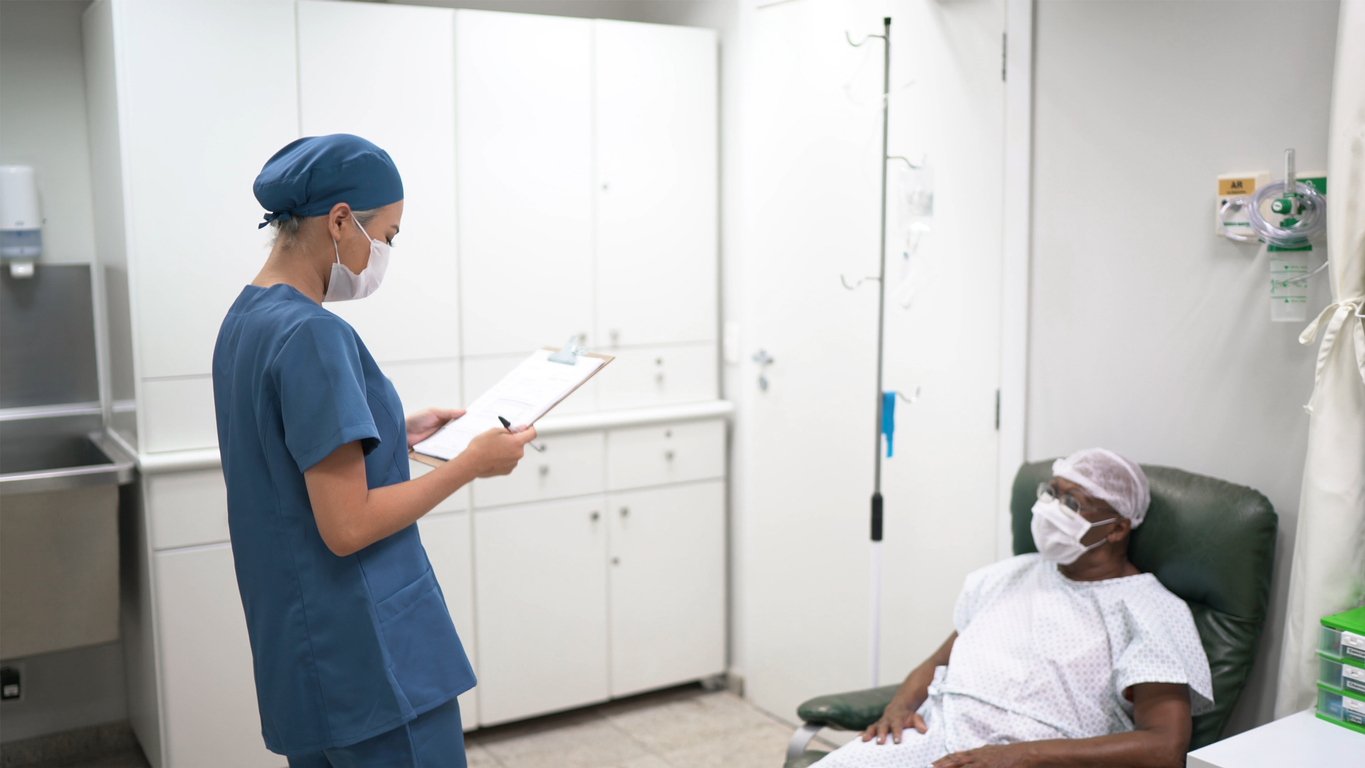Peritoneal malignancy is diagnosed in approximately 500 patients annually in Ireland. The incidence is increasing, having approximately doubled in the last decade. The vast majority of cases arise as a result of metastatic spread from intra-abdominal primary cancer (colorectal, appendiceal, ovarian, gastric, pancreatic).
Approximately 10 per cent of cases are the result of metastatic spread from extra-abdominal cancer, in particular breast cancer, lung cancer and malignant melanoma. Primary peritoneal malignancy (eg, peritoneal mesothelioma and primary peritoneal cancer) is extremely rare, affecting only a hand-ful of patients annually. Symptoms are difficult to manage and typically include: Abdominal distension, anorexia, vomiting and abdominal pain due to the progressive intra-abdominal tumour burden and secondary ascites. Once established, peritoneal malignancy is invariably a fatal diagnosis, with median survival in Ireland of six months (source National Cancer Registry Ireland (NCRI), 2012). Patients with metastatic spread to the peritoneum have worse outcomes than their counterparts with stage IV disease not involving the peritoneum.
Palliative chemotherapy has traditionally been the mainstay of treatment. Supporting data in this setting is however limited, as few studies have been specifically performed in patients with stage IV disease involving the peritoneum. Surgery, termed cytoreduction, may be considered in highly-selected patients with resectable disease. Cytoreductive surgery (CRS) may require all or a combination of total abdomino-pelvic peritonectomy, greater and lesser omentectomy, colectomy, rectal resection, small bowel resection, hysterectomy with bilateral salpingo-oophorectomy, cholecystectomy, splenectomy, liver capsulectomy and occasionally gastrectomy.
This surgery is performed with the intention of removing all macroscopic tumour and the surgical cytoreduction may be augmented by the delivery of intra-peritoneal chemotherapy (typically mitomycin C or oxaliplatin as a single dose for 60-to-90 minutes) at the end of the procedure, with the aim of eradicating any residual microscopic tumour. The chemotherapy is typically heated to 41-to-43°C in order to improve cytotoxicity and increase chemopenetration, hence the term ‘HIPEC’ (heated intra-peritoneal chemotherapy). The entire procedure can take up to 10 hours and is typically followed by a two-week inpatient stay. Multidisciplinary input is required, including a team of surgeons from different disciplines, critical care, radiology, and the allied disciplines including nursing, dietetics and physiotherapy. With evolving international experience, the risk of major morbidity after CRS HIPEC has reduced significantly to approximately 4-to-8 per cent, with a postoperative mortality rate of less than 1 per cent. After surgery, patients typically require three months or more to make a complete recovery. Approximately 50 patients in Ireland are suitable for and undergo CRS combined with HIPEC annually at the Mater University Hospital, Dublin. The vast majority of these patients have either colorectal cancer peritoneal metastases or a condition known as pseudomyxoma peritonei (PMP). Peritoneal mesothelioma is a very rare indication for CRS HIPEC, while the approach is not as yet established in patients with peritoneal spread from upper gastrointestinal or extra-abdominal cancer.
<h3 class=”subheadMIstyles”>Colorectal cancer peritoneal metastases (CRC PM)</h3>
Peritoneal metastases are seen in approximately 5 per cent of patients with colorectal cancer at initial diagnosis (synchronous disease), while a further 10 per cent subsequently develop metachronous peritoneal spread. Surgery may be considered in medically-fit patients with fully-resectable disease of low-to-moderate volume, as determined by a scoring system known as the peritoneal carcinomatosis index (PCI).
This system divides the abdomen into 13 regions and allocates a score of 0-3 to each region proportionate to its disease volume. The PCI may be estimated using a combination of imaging (contrast-enhanced CT and in selected cases, diffusion-weighted MRI) and staging laparoscopy but ultimately, can only be reliably determined at exploratory laparotomy.
Disease progression during systemic therapy, the presence of non-peritoneal distant metastases, multi-focal small bowel involvement, biliary and/or ureteric obstruction, signet ring features and PCI greater than 20 are considered relative contraindications to surgery. Patients are selected following multidisciplinary discussion with input from surgeons, oncologists, radiologists and pathologists. Based on current criteria, approximately 40 per cent of patients referred to a peritoneal malignancy centre with CRC PM will be candidates for CRS. The evidence supporting this multimodal approach first came from a randomised, controlled trial performed by Verwaal in the Netherlands and published in 2003. Patients in the treatment arm underwent CRS with HIPEC, followed by systemic chemotherapy, while those in the control arm received systemic chemotherapy, with or without palliative surgery. In the CRS HIPEC group, median survival was 22 months, compared to 13 months in patients randomised to systemic chemotherapy only.
In the same study, median survival in the subgroup of patients who had a complete cytoreduction (all tumour removed) was 48 months (45 per cent five-year survival), emphasising the importance of selecting those patients with fully-resectable disease. Multiple observational studies have since been performed, including large national cohorts, and have reported median survival following CRS HIPEC in selected patients of up 47 months. The best available data suggest a cure rate (disease-free at five years) of approximately 15 per cent. The majority of patients will, however, relapse and of those who do, one-third will recur in the peritoneum, one-third in non-peritoneal distant organs, and one-third at both sites. Reported survival in patients treated with modern systemic chemotherapy only is in the order of 24 months, however the lack of recent controlled studies should be emphasised.
The long-awaited PRODIGE 7 study was reported at ASCO in June of this year. This multi-centre, randomised, controlled trial compared CRS alone to CRS with HIPEC (oxaliplatin-based) in patients with resectable colorectal peritoneal metastases. Nearly all patients also received systemic chemotherapy.
Median overall survival in both arms was excellent (approximately 42 months), however, there was no additional survival benefit with the addition of HIPEC to cytoreductive surgery. The subgroup analysis suggested a potential gain from HIPEC in those patients with intermediate volume disease, as scored by the PCI system. Overall, the findings support a multimodal approach of systemic chemotherapy and CRS, combined with a more selected and tailored use of HIPEC in patients with CRC PM.
<h3 class=”subheadMIstyles”>Pseudomyxoma peritonei</h3>
Pseudomyxoma peritonei (PMP), commonly referred to as ‘jelly-belly’, is a rare condition characterised by the formation of mucinous tumour plaques throughout the abdominal cavity, which produce large volumes of gelatinous ascites. The primary source is most commonly a mucinous tumour of the appendix, from which cells were shed during asymptomatic perforation. Over time, these cells, transported by normal physiological movement of peritoneal fluid, deposit and replicate at predictable sites, including the sub-diaphragmatic spaces, the omentum, the pelvic cul-de-sac, and the ovaries in females. While invasive features are unusual, a spectrum of low-to-high cytological grade is seen. Elevation in tumour markers (CEA, Ca 19-9, Ca125) is a predicator of a more aggressive phenotype and worse prognosis. Traditionally, the incidence of PMP was thought to be approximately one/million/year, however the Mater experience would suggest that the true rate is at least four times higher.
A low-grade mucinous tumour of the appendix is a relatively common incidental finding following appendicectomy performed for acute appendicitis. A subset of these patients are at future risk of developing PMP and as a precaution, should be kept under surveillance with regular clinical assessment and imaging.
Once established, PMP is invariably a progressive and fatal condition which responds poorly to systemic therapy. It was for this reason that Sugarbaker pioneered surgical approaches to PMP, and the concept of CRS HIPEC was born. The largest single-centre experience stems from Basingstoke, UK, where more than 1,000 patients with PMP have undergone CRS HIPEC. Their results show that after complete cytoreduction (all tumour resected), approximately 80 per cent of patients will be alive and disease-free at 10 years. Patients with unresectable disease may also benefit from surgery in the form of maximal tumour debulking, combined with HIPEC.
<h3 class=”subheadMIstyles”>Future directions in peritoneal malignancy</h3>
In recent years, there has been a significant increase internationally in the number of centres offering CRS HIPEC, with a corresponding increase in the number of patients undergoing surgical treatment for peritoneal malignancy. This development is to be welcomed and should act as an impetus for increased focus on improving outcomes in patients with peritoneal cancer. There is, however, also an onus on the peritoneal malignancy community to standardise approaches and generate robust data to support patient selection for surgery and document outcomes.
Patient selection for CRS HIPEC remains a crucial and challenging area. For certain conditions, such as PMP, the decision to proceed to surgery is often reasonably straightforward. For patients with CRC PM, on the other hand, the decision is often difficult. Current criteria are a useful means of identifying those patients who might benefit from surgery, however our knowledge of disease behaviour in this heterogenous group is still in its infancy. Improved understanding of the histopathological and molecular subtypes of both colorectal cancer and the corresponding peritoneal disease should in time allow us to better tailor treatment for patients with CRC PM and select those who are most likely to benefit from CRS, with or without HIPEC. It would also now seem timely to re-examine the relative merits of systemic chemotherapy and surgery (with or without HIPEC) in the management of CRC PM by repeating the original Dutch study using modern agents and current selection criteria.
The results of a number of randomised, controlled trials are eagerly awaited and have the potential to significantly influence practice, particularly for CRC PM. The full report from PRODIGE 7 is awaited and will likely lead to a more selected use of HIPEC in patients undergoing CRS for colorectal peritoneal metastases. Other randomised trials have examined the application of CRS HIPEC as a prophylactic intervention in patients at high risk of developing peritoneal metastases (eg, T4 right colon cancer). These studies have finished recruiting and results are awaited. The role of intensive systemic treatment aimed at down-staging patients with a large tumour burden with a view to making them candidates for surgery has also been examined and again, results are awaited.
The future may bring an expansion beyond the current established indications for CRS HIPEC. For example, recently-published randomised data has shown a survival benefit to CRS HIPEC for patients with stage III epithelial ovarian cancer. In this study, and unlike PRODIGE 7, the addition of (cisplatin-based) HIPEC to CRS was found to significantly improve survival when compared to CRS alone (median overall survival, 45.7 vs 33.9 months). Many of these and other issues will be debated at the 11th International Workshop on Peritoneal Surface Malignancy to be held in Paris later this year.













Leave a Reply
You must be logged in to post a comment.